- Home
- Encyclopedia
- Wyoming’s First Coal Bust
Wyoming’s First Coal Bust
During Wyoming’s halcyon days of coal in 2008, Powder River Basin mines collectively filled more than 100 two-mile long trains per day and sent them rolling to power plants in 36 states. After 11 years of decline, the daily pulse of coal trains out of the basin slowed to fewer than 50.
In 2019, energy-market analysts warned that Wyoming’s coal industry, plagued with bankruptcies, was barreling down a track toward oblivion—in 15 years, if not sooner—due to a shift to cheap and abundant natural gas and broader implementation of renewable energy. The coronavirus pandemic of 2020 seemed to seal that fate.
It’s not the first time in Wyoming that the coal industry has gone bust and threatened to shrink into the past.
After World War II, North American railroads began to switch from coal-steam locomotives to diesel, taking advantage of a fuel that was easier to obtain and integrate throughout its system. By 1954, the dieselization of the railroads was nearly complete. The Union Pacific, the railroad that 85 years earlier had connected Wyoming to the nation, was laying off hundreds of coal miners and shutting its mines in the state.
Coal production in Wyoming crashed 46 percent that year, and the number of mining jobs was cut by nearly half. The bust brought Rock Springs to its knees and across Wyoming turned dozens of coal camps—essentially company towns—into ghost towns. The Local 8038 of the United Mine Workers wired Wyoming’s congressional delegates with a plea for food, explaining that families were in “dire circumstances.”
“It was the grim reaper, job-wise. You can’t imagine. Virtually every mining job was eliminated,” said Kathy Karpan, who was a young girl growing up in Rock Springs at the time. “The town of Rock Springs, for a short time, was thrown into a depression. It was a terrible time, and the turnabout did not come overnight.”
The coal bust of the 1950s marked a shift from underground to surface coal mining in Wyoming which, until the 1970s, required far fewer miners. Dozens of tiny coal towns were abandoned and dismantled. Predating modern state severance taxes on coal and partial rebates to states of federal royalties on coal, the bust didn’t threaten the state’s finances to the degree it might today.
Though many mining families left the state, many others packed up from coal camps and congregated in places like Rock Springs where a hearty and innovative multicultural community held on until the next boom.
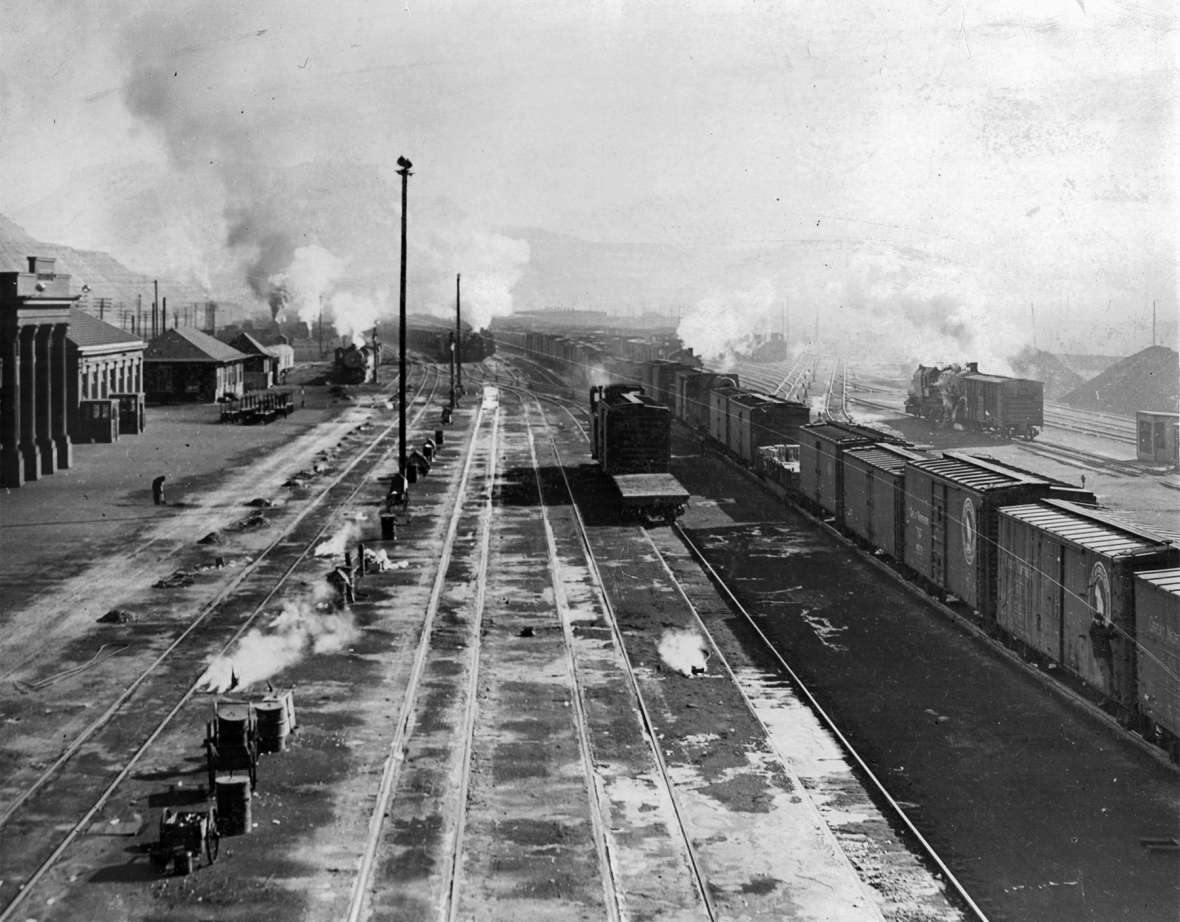
History of Wyoming coal mining
From 1865 to 2018, Wyoming produced more than 11.9 billion tons of coal, according to the Wyoming State Geological Survey. By far, the bulk of that production came in the decades after large open-pit mining proliferated in the Powder River Basin in the 1970s.
American Indians were likely the first to burn coal in Wyoming, although there’s little archeological evidence they extracted coal by mining it below the surface. Early in the colonization of the West, emigrants were drawn to areas where coal outcropped at the surface—particularly on the high, arid plains of Wyoming where wide-open treeless areas provided little fuel for heat. Small “family” mines were abundant as homesteaders moved into the region, including in northeast Wyoming where red scoria hills from ancient coal fires demarcated the eastern outcroppings of Powder River Basin coal seams.
By the 1850s, coal began replacing wood-burning locomotives. The route planned by Union Pacific surveyors across the future Wyoming in the late 1860s was a route from mine to mine: Shafts were sunk throughout the state, with most coal production concentrated along the U.P. corridor from Cheyenne to Evanston. Later mines in Weston, Campbell and Sheridan counties served the Burlington Railroad in northeastern Wyoming.
Although coal was used to heat homes and buildings, mining primarily supplied railroads, which also owned many mining operations in the state.
Annual coal production in Wyoming climbed to 9.5 million tons in 1920 and employed 8,166 miners. But for the next 20 years annual production settled to an average of about 6 million tons. Production bounced back during World War II, peaking at 9.8 million tons in 1945, from 100 mines in 15 counties, according to the Wyoming Mining Association.
For the next seven years, coal production gradually receded to pre-war levels. However, there wasn’t a sense of an impending coal bust. An increase in the production of other minerals offset the backslide in coal. Major oil companies were expanding operations in the state. There was increasing demand for Wyoming’s bentonite, as well as renewed interest in Wyoming’s vast uranium deposits.
During this post World War II era, railroads—including the Union Pacific—accelerated efforts to switch from coal-steam locomotives to diesel. Railroads being the primary demand for Wyoming coal, men returned home to Wyoming from the war to find that coal mining jobs were vanishing. At the time, coal and hard rock mines were still fairly prevalent throughout the West. A miner who couldn’t find work in Wyoming could relocate to another mining town in another state.
As the Union Pacific shifted to diesel engines, it moved some of its last working coal-steam locomotives to Wyoming. But the state would not be spared from the fuel technology revolution brought on by the railroads.
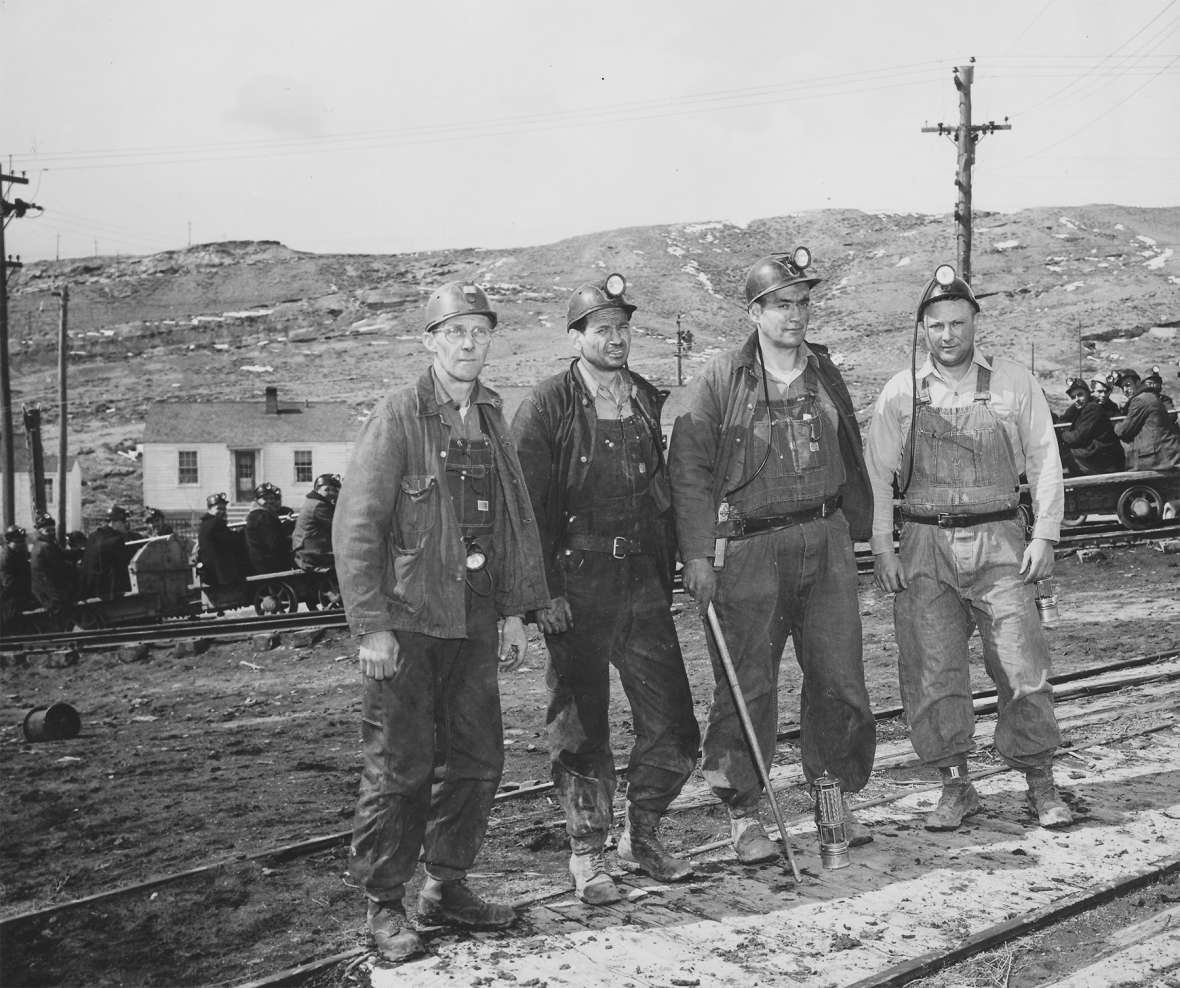

An industry goes bust almost overnight
In the early 1950s, miners were increasingly aware of what the retirement of coal-steam locomotives might mean for their futures, and the railroads were desperate to avoid strikes at the union mines. They needed to buy time.
In 1953, Union Pacific Vice President of Operations P.J. Lynch gave a speech to 2,000 people in Rock Springs. “We are not giving up coal and the day when we do is too far away for us to consider tonight.” Later that year, over the Christmas holiday, Union Pacific began closing its mines at Reliance in Sweetwater County and Hanna in Carbon County. The hammer came down in January 1954 when the railroad shut both mines, cutting 180 jobs.
More closures and layoffs came quickly. That year, the Union Pacific laid off 760 miners in Sweetwater County. By 1957, another 340 miners had lost their jobs in Sweetwater County.
“They began to shut down coal mines as quickly as they could,” said Dudley Gardner, co-author of Forgotten Frontier: A History of Wyoming Coal Mining. “They would basically walk in and shut down a coal mine overnight. It came as a shock. They [miners] weren’t prepared, financially or anything else.”
When layoffs first came en masse in the winter of 1954, United Mine Workers officials worried that families might starve. They convinced officials in Washington D.C. to send rations to help families survive the winter. “There was surplus food distributed in our neighborhoods,” said Karpan. “There was powdered milk and powdered eggs, and canned pork and canned beef. It was surreal. I don’t think anybody had to sign up.”
In just five years—from 1953 to 1958—Wyoming lost 70 percent of its annual coal production, settling to just 1.6 million tons. The number of coal miners in Wyoming—which had peaked at 9,192 in 1922—crashed to below 500 in 1959.
Union Pacific closed its last Wyoming coal mine, Rock Springs No. 8, on Aug. 28, 1962. In 1965, there were 327 coal miners in Wyoming.
Coal miners, particularly in mining camps, did not own the property on which their homes stood. Company-owned coal camps were dismantled. They wanted to avoid paying taxes assessed on structures, so many homes and buildings were sold cheaply and moved to bigger towns throughout the state.
Southwestern Wyoming mining towns such as Glencoe, Sublet, Susie and Oakley in Lincoln County and Dines, Superior, Gunn, Quealy, Lionkol and Winton in Sweetwater County were all abandoned. In Sheridan County in the northeast, the mining towns of Carneyville, Acme and Monarch were dismantled. Many families scattered to wherever they could find jobs in iron ore, copper and surviving coal towns across the West.
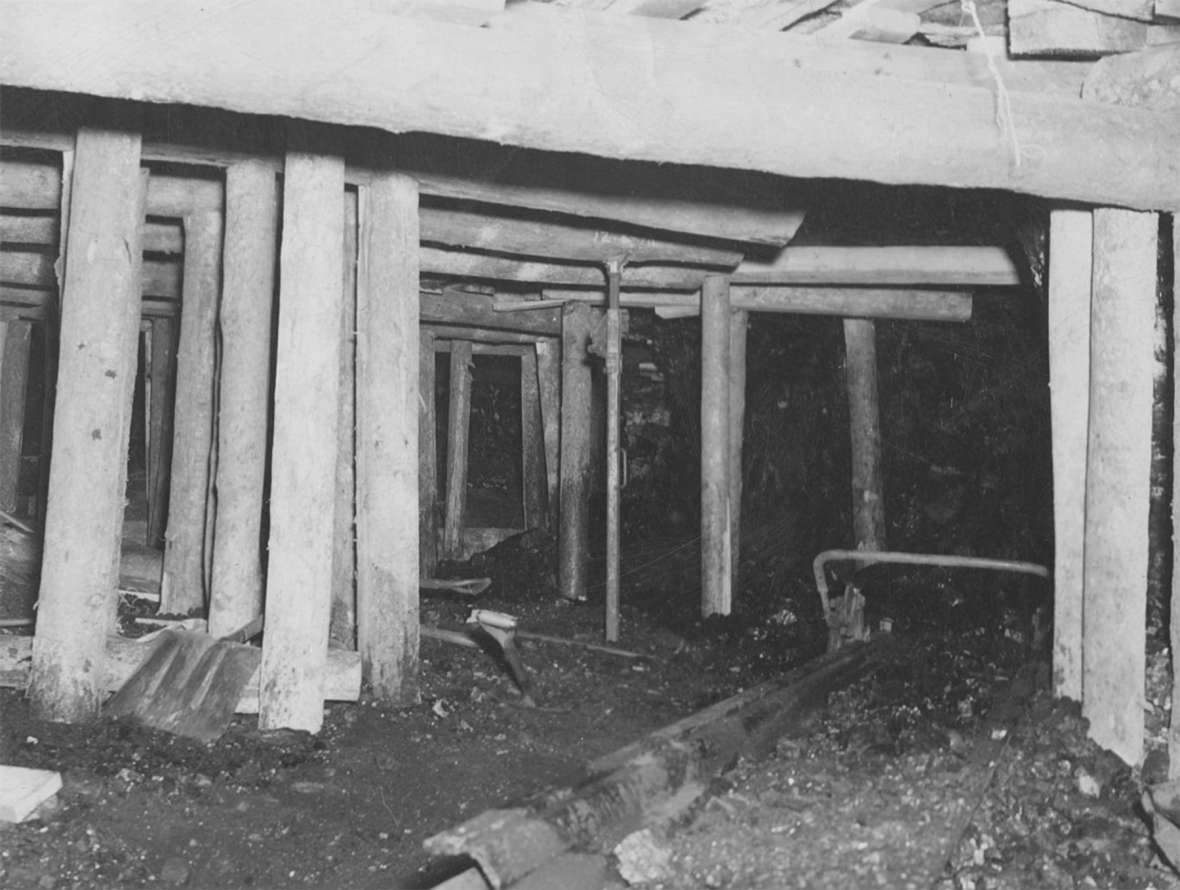
A culture endures
The allure of union mining jobs with steady work, good salaries and benefits attracted emigrants from all over the world in the early 1900s. Many came from Wales, Scotland, Slovenia, Croatia and Greece, eager to sink roots and build a new life for generations to come. Rock Springs at the turn of the century had two Italian language newspapers; IL Grido Del Popolo (The Cry of the People), and Vita Nuova (New Life).
Karpan recalled a story that when the census was taken in 1920, census takers had to request a number of translators to come to Rock Springs. The Union Pacific intentionally recruited emigrants from multiple nationalities hoping to prevent one nationality being singled out. This strategy was in response to the September 1885 Rock Springs Massacre when striking coal miners killed 28 Chinese workers and razed the town’s Chinese district.
By the 1950s, Karpan remembers a Rock Springs that was a “tolerant and accepting society.” At one time, Rock Springs was known as the Home of 56 Nationalities. “It was an ethnic community,” Karpan said. “It was a town of immigrants who came to mine. Miners could buy a house. They encouraged their kids to get an education because they knew that mining was dangerous. I can’t think of one adult in my family that wasn’t injured in the coal mines.”
The community’s commitment to education would help Rock Springs persevere in the wake of the coal bust, a devastating economic blow. But the town’s rich multicultural heritage endured.
“There was still a core of people who remained in Rock Springs,” said journalist Paul Krza, who grew up in Rock Springs at the time. “Some of them were people who just couldn’t leave, some of them had money and could afford to sit back.”
Banks and meat markets held on, Chinese cafes remained, a Finnish flower shop, as well as various pubs owned by German and Greek descendants. As the coal camps were dismantled, many families moved to Rock Springs. All told, Rock Spring’s population dropped by only 500 people from 1950 to 1960.
“The people that had the ability fled, the people who really had no choice kind of scraped by,” Krza said. “The people who owned a house were better off hanging on rather than hitting the road with a skill [underground mining] that nobody wanted at the time.”
Life after the bust
After the bust, there were few opportunities to strike out as a rancher in Wyoming, and the skills of an underground coal miner were quickly losing favor. Just a few underground mines remained. Surface strip mining technology was already outpacing underground mines. In Sheridan County, the open-pit Big Horn Coal Mine produced more coal with fewer miners and forced the closure of several underground mines in the northeastern part of the state.
When the coal bust hit, there was no hint of big coal-fired power plants and large-scale strip mining in Wyoming’s future. The coal industry in Wyoming showed no signs of recovery. It seemed a relic quickly receding into the past until the latter half of the 1960s when electric utilities began building large coal-fired power plants.
A surface strip mine was constructed to supply the Dave Johnston coal-fired power plant near Glenrock in the late 1950s, but provided few jobs relative to the number of miners out of work. More coal-fired power plants would be constructed in Wyoming in the 1960s and 1970s. But it was Wyoming’s massive trona deposits outside Green River, Wyo.—the largest in the world—that would help save southwest Wyoming communities from disappearing in the wake of the coal bust.
“The trona mines opened up about the same time and saved the community,” said Gardner.
Trona is a sodium carbonate that is refined into soda ash, used to make glass, detergents and myriad products. Wyoming supplies 90 percent of the nation’s trona via underground mining.
Commercial trona mining began in the late 1940s with the merger of Westvaco Chemical and Food Machinery and Chemical Corp. Production expanded in the 1950s, and by the 1960s trona provided hundreds of good-paying union jobs for coal miners who’d been laid off—at least for those who’d stuck around.
Even in the economic ruin of the coal bust, the belief among Sweetwater County’s mining community that a good education was key to better, safer jobs for their children endured. In the 1950s, Wyoming saw an increasing exodus of young people, who were dissatisfied with job opportunities. A citizens’ campaign was launched in Rock Springs to establish a college district—now Western Wyoming Community College—in the fall of 1959, immediately enrolling 40 students.
“At that time, it was pretty daring,” said Karpan. “I think it was a recognition that the future would require highly-educated workers. People didn’t really give up.”
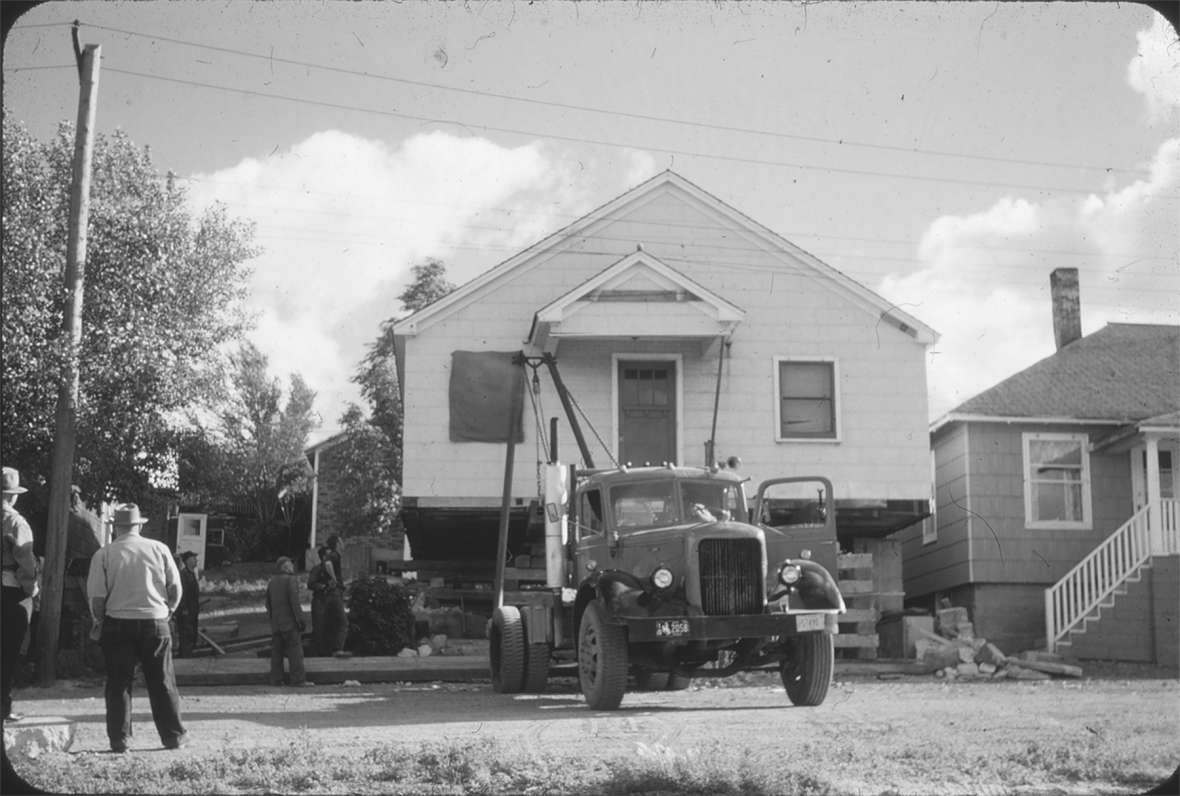
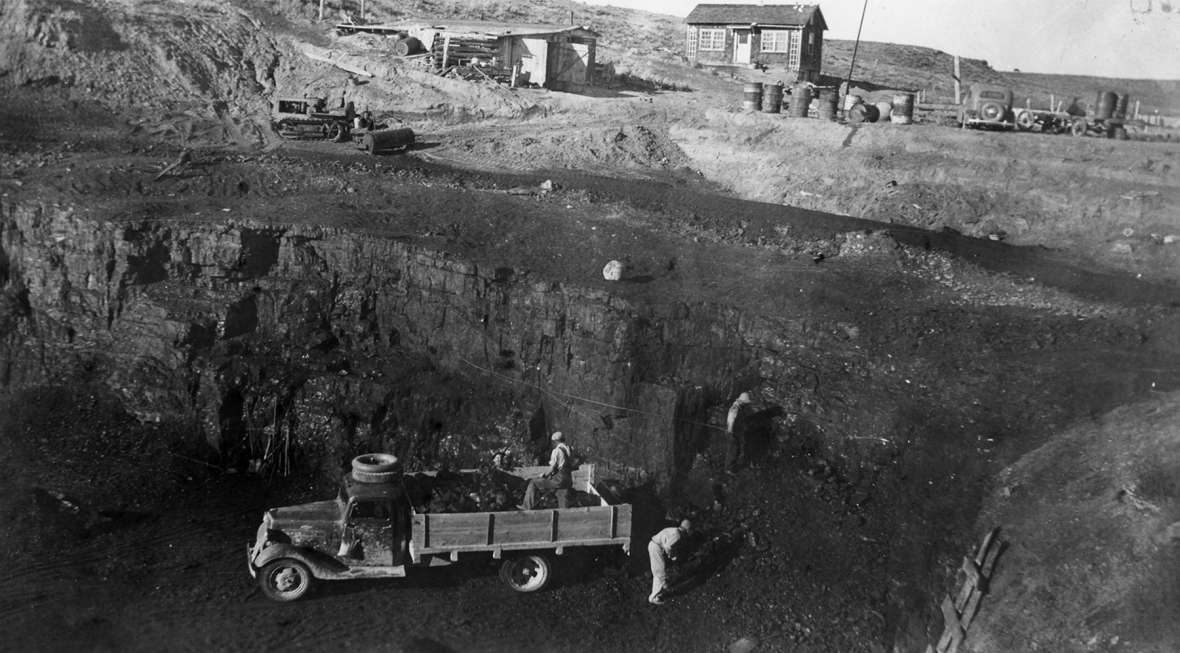
Boom times again
Statewide, the economic loss of coal was replaced with expanding oil and natural gas production, bentonite and uranium mining. World geopolitical dynamics in the early 1970s, along with a wave of new federal environmental laws and regulations, would dramatically change Wyoming’s coal industry as well as the state’s economy.
Utilities needed a reliable, low-cost supply to power a growing fleet of coal-fired power plants in the U.S. They also needed to cut ash, sulfur oxide and nitrogen oxide emissions, thanks to the federal Clean Air Act of 1970 and efforts by the newly-formed U.S. Environmental Protection Agency to curb industrial air pollution.
Attention turned to the vast reserves of low-sulfur subbituminous coal in the Powder River Basin. Here, strip mines could remove a thin layer of overburden to access coal seams 50 and 100 feet thick, and fill coal trains that delivered the fuel to power plants in just about every region of the U.S.
As quickly as coal went bust in the 1950s, it boomed again in the 1970s. From 1969 to 1974, coal production in Wyoming quadrupled from 4.6 million tons to more than 20 million tons.
The first large commercial strip mine of this new era was Belle Ayr, constructed in 1970, about 20 miles south of Gillette. The mine sent its first shipment of coal in 1972. The race was on to build new strip mines in northeast Wyoming, and even global oil giants wanted in on the action. Exxon formed Exxon Coal, USA Inc., and had a stake in the Caballo and Rawhide mines.
Atlantic Richfield (ARCO) prepared to build a massive coal mine 50 miles south of Gillette, but the town was bursting beyond capacity with all of the coal mine construction. So it bought 735 acres near Reno Junction, closer to its new mine, from rancher Dale Wright. The new company town, Wright, housed construction crews to build the Black Thunder mine, and then grew into a small mining community.
Nearly all of the new large strip mines were built within Campbell County, a sheep and cattle economy that until the 1970s relied on oil and natural gas to buoy its revenue. In 1939, Campbell County recorded an assessed valuation of $8.4 million. By 1987, Powder River Basin coal mining had pushed the county’s assessed valuation beyond $1 billion. In 2012, $5.8 billion.
“Two environmental laws—” the Clean Air Act of 1970 and the Surface Mining Control and Reclamation Act of 1977—" set up the Powder River Basin to make a fortune in the last 50 years,” Karpan said.
Among the largest benefactors were the two railroads that served the Powder River Basin coal district: Burlington Northern Santa Fe Railway and the Union Pacific Railroad.
Coal regained favor in the southwestern part of the state, too, with new coal mines to serve the Jim Bridger and Naughton power plants. Sweetwater County’s industrial service sector continued to grow to serve trona, coal and deep natural gas extraction, as well as the Shute Creek and La Barge natural gas processing plants northeast of Kemmerer. Halliburton, the oilfield services giant, became a major employer, supporting hundreds of jobs with its hydraulic fracturing headquarters initially based in Rock Springs in the early 2000s, but scaled back its operations in October 2019.
The coal bust of the 1950s demonstrates the magnitude of cultural and economic influence that railroads and mineral extraction have played in Wyoming. While those industries are mostly driven by forces outside the state, they also shape and are shaped by the hardy people and communities that call Wyoming home.
“I have never understood why we celebrate the cowboy on our license plate, for our sporting teams and for our culture when this state was started by and supported by railroaders and coal miners,” Karpan said in a recent interview. “The railroad came through here because it was flat country and there was plenty of coal. They paid the taxes. They created good jobs. And those industries have never gotten the recognition—in my opinion—which they deserve.”
Editor’s note: WyoHistory.org thanks the American Heritage Center at the University of Wyoming for support that made publication of this article possible.
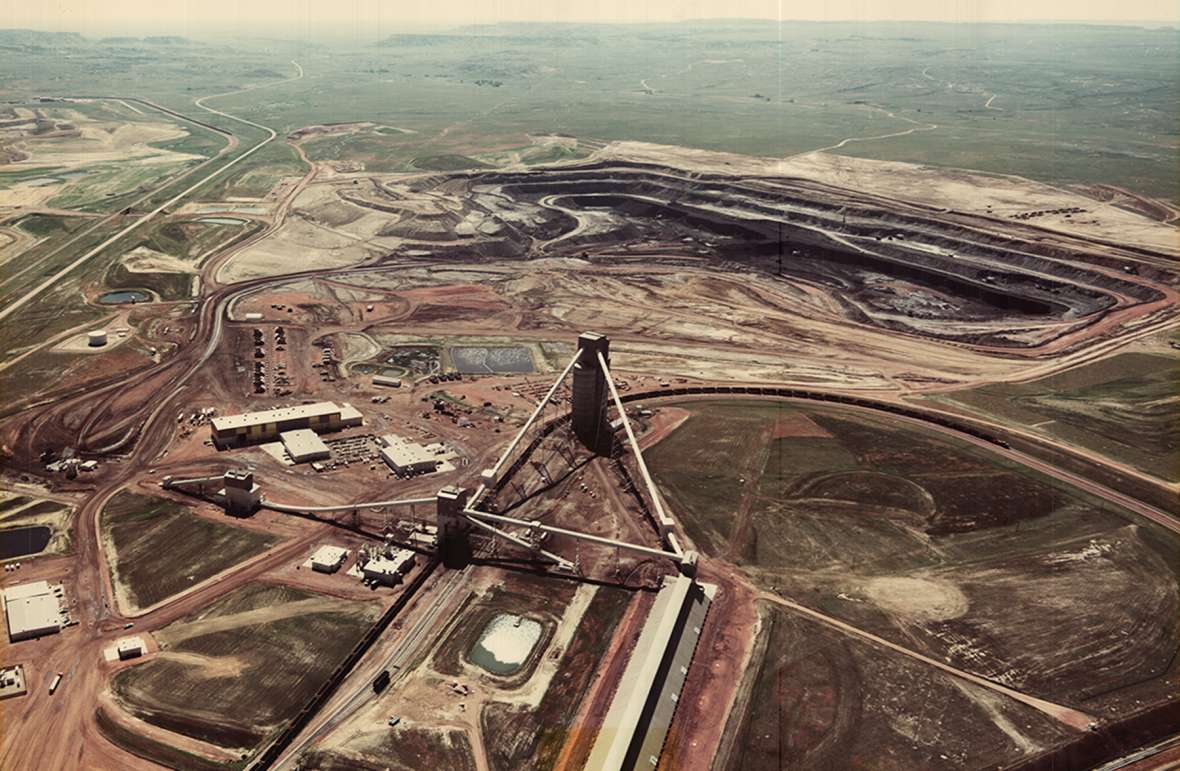
Resources
Primary Sources
- Gardner, Dudley. Interview with author. April 2020
- “Italian Newspapers from Rock Springs.” Wyoming Newspapers, accessed May 15, 2020 at https://newspapers.wyo.gov/news/italiannewspapersfromrocksprings.
- Karpan, Kathy. Interview with author. April 2020
- Krza, Paul. Interview with author. May 2020
Secondary Sources
- Andersen, Chamois L. and Lori Van Pelt. “Wyoming's Uranium Drama: Risks, Rewards and Remorse.” Nov. 8, 2014. WyoHistory.org, accessed May 15, 2020 at /encyclopedia/wyomings-uranium-drama-risks-rewards-and-remorse.
- Bleizeffer, Dustin. “Is PRB coal headed for gradual decline or sheer cliff?” Jan. 7, 2020. WyoFile, accessed May 15, 2020 at https://www.wyofile.com/is-prb-coal-headed-for-gradual-decline-or-sheer-cliff/.
- Frontier. Wyoming Mining Association. 1971, 25. This history of the WMA from 1956-1986 is a booklet in the collections of the Wyoming State Archives.
- Gardner, Dudley A. and Verla R. Flores. Forgotten Frontier: A History of Wyoming Coal Mining. Boulder, Colo.: Westview press, 1989, 3-190. The quote from Union Pacific Vice President P.J. Lynch’s 1953 “We are not giving up on coal” speech is on p. 184.
- “Gauging U.S. Economic Activity Through Rail Traffic Data.” Association of American Railroads, accessed May 15, 2020 at https://www.aar.org/data-center/rail-traffic-data/.
- Kelley, Mary. Coal in Campbell County. Images of America Series. Charleston, S.C.: Arcadia Publishing, 2013.
- Mast, Tom. “Refining Wyoming's Oil for 120 Years.” March 1, 2015. WyoHistory.org, accessed May 15, 2020 at /encyclopedia/refining-wyomings-oil-120-years.
- Rea, Tom. “The Rock Springs Massacre.” Nov. 8, 2014. WyoHistory.org, accessed May 15, 2020 at /encyclopedia/rock-springs-massacre.
- “Trona.” Wyoming Mining Association, accessed May 15, 2020 at https://www.wyomingmining.org/minerals/trona/.
- Western Wyoming Community College, accessed May 15, 2020 at https://www.westernwyoming.edu/about/overview/index.php.
- Wyoming Mining Association. “Coal Production 1912 through 2018.” Click here to see a pdf.
For further information and research
Roberts, Phil. “When Coal Died in Wyoming: A History of Energy.” YouTube video of lecture given at Western Wyoming College under the auspices of the University of Wyoming’s Saturday University, 2016. Accessed Feb. 25, 2022 at https://www.youtube.com/watch?v=ugZ1sAOWitI.
Illustrations
- The black and white photo of the small East Antelope surface mine, from the Niemcyk family collection, and the color photo of the Black Thunder Mine are both courtesy of the Campbell County Rockpile Museum in Gillette. Used with permission and thanks.
- The photos of the four miners, the Green River rail yard, the house being moved and the 1935 Old Timers’ reunion are all from the Sweetwater County Historical Museum in Green River. Used with permission and thanks.
- The photo of the cave in in the coal mine is from the American Heritage Center at the University of Wyoming. Used with permission and thanks.
